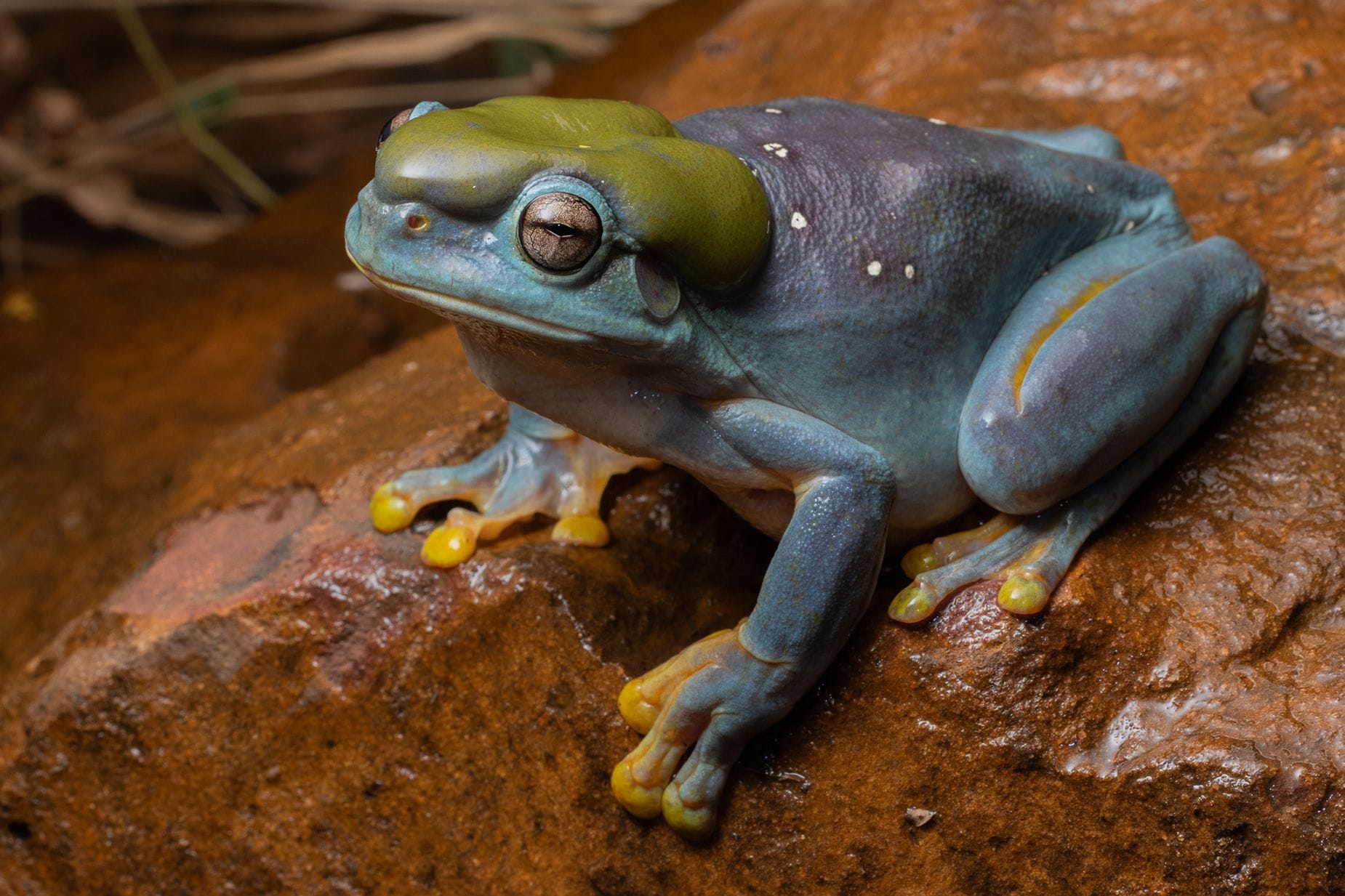Rare genetic mutation turns green frog blue
(CNN) — Scientists in Western Australia have found a tree frog which is bright blue, rather than the usual green, due to a rare genetic mutation.
The blue magnificent tree frog was spotted in the Charnley River-Artesian Range Wildlife Sanctuary in the Kimberley region, according to a statement from the Australian Wildlife Conservancy (AWC) this week.
This is the first time a blue color mutation has been recorded in the magnificent tree frog, according to AWC.
“It was after dark when we first spotted it, perched on a bench in the workshop near our research centre,” said AWC field ecologist Jake Barker in the statement Monday.
“It was very exciting. Magnificent tree frogs are already spectacular, but to see a blue one is a once-in-a-lifetime chance.”
This kind of mutation is extremely rare, according to Jodi Rowley, curator of Amphibian and Reptile Conservation Biology at the Australian Museum.
“Very occasionally, a green frog is missing yellow pigment in its skin, and it results in an entirely or mostly blue frog,” she said in the statement.
“I’ve seen tens of thousands of frogs over the years, and only seen one blue frog – and it was nowhere near as spectacular as this magnificent tree frog. A rare encounter and one that highlights the spectacular diversity of Australia’s frogs.”
The magnificent tree frog, or Litoria splendida, is only found in northern Kimberley and nearby parts of Australia’s Northern Territory. It grows to around 12 centimeters (4.7 inches) making it one of the largest species of amphibians in the country.
“This is one of a number of north-west endemics that we come across pretty regularly around here,” said Barker in the statement.
“They’re not found anywhere else. That’s the great thing about working in the Kimberley – you never know what rare wildlife you’re going to see each day.”



